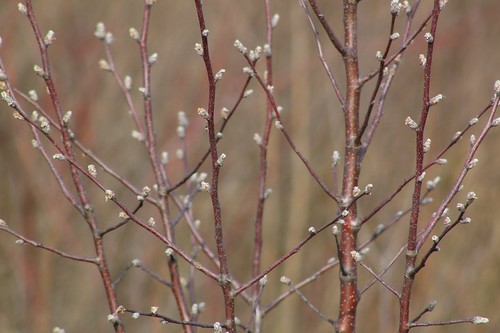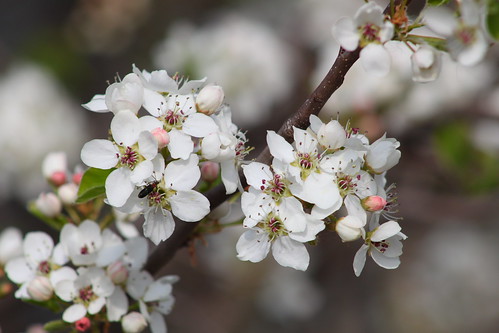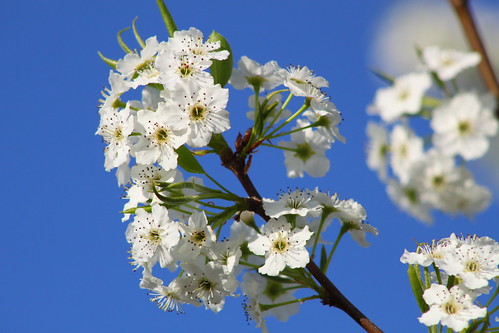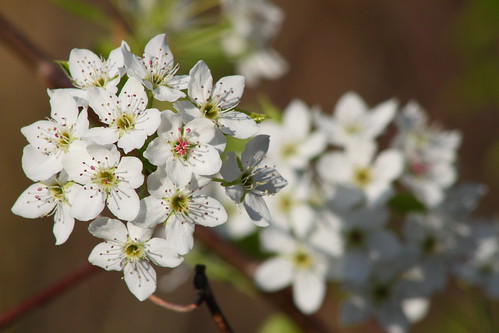With the bright sun and warm weather the naturalized Callery Pear trees are beginning to bud. I see these pear trees often now in old fields and along roadsides. They strongly resemble "Bradford" pear trees that are so often seen planted in neighborhoods and in yards. I did a little research about them and it turns out they are becoming a real pest because of their invasive nature.
The natural species from which many common pear cultivars have been created is called Pyrus calleryanna. The tree is native to China and many cultivars were created by the USDA in the 1960's. Among these cultivars is the ubiquitous "Bradford" variety that has been planted all over the United States in neighborhoods, shopping centers, and parks. These pear trees have been a favored planting over the decades because of their spring flowering and fall color and because they are resistant to many types of blight and diseases.
The many varieties of Callery Pear have been grown in the United States since the early 1900's, but it is just in the past decade that they have become invasive. Normally Callery Pear cultivars were self-incompatible, meaning they were unable to self pollinate and produce viable fruit. The trees still produced small pears that were devoured by birds and wildlife, but since they were infertile, the seeds did not spawn new trees. In the past decade however, this has changed and now naturalized Callery Pears are spreading and out-competing native trees in the environment. Scientists think that new varieties that have been introduce in the past 20 years have cross-pollinated with the old varieties, creating trees capable of producing viable fruit. The fruit is spread primarily by European Starlings and other birds across the landscape.
The resulting naturalized trees are very similar in appearance to the native species of Pyrus calleryanna in China. It is common when two cultivars cross-pollinate for the resulting offspring to take on the characteristics of the native tree. This is called reversion and was even touched upon by Chalres Darwin in the Origin of Species. The now naturalized Pyrus calleryanna has flowers and fruits that are similar to the cultivars but has different growth habits and some now produce thorns. These trees are a threat to the environment because they are displacing native plant communities. They grow in near monoculture and crowd out native trees and plants.
So if you are like me and have been seeing these trees in the wild and wondering about their origins, now you know. Not much can be done to reduce the spread of these trees now because the wild variety freely interbreeds with itself and man-made cultivars. One thing to take into consideration is to plant native trees when landscaping your yard. This is always a best practice because it provides the local wildlife with food and shelter it is adapted to. When considering trees for your yard, look to Flowering Dogwood, Eastern Redbud, or Downy Serviceberry instead of the Callery Pear.



 10:03 AM
10:03 AM






 Posted in:
Posted in: 




1 comments:
Wonderful images Ryan!
Post a Comment